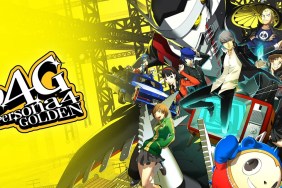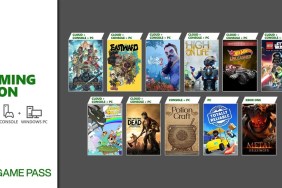The bird and the bear frolic in Lego-land.
When Microsoft bought Rare for an ungodly sum many feared that classic Rare properties would be lost forever. Sure, Kameo hopped over to the Xbox 360, but that was a game still in early development, and Joanna Dark was included as part of the sale. While Perfect Dark had some name recognition, it was nowhere near the level of Banjo and Kazooie. They may have been created by Rare, but the two characters were just as much mascots for the Nintendo 64 as Mario. So it was a bit of a surprise when Microsoft and Rare announced that a new Banjo and Kazooie game was coming to the Xbox 360. It also meant that Rare not only had to satisfy the current generation of gamers, but a raving legion of fans that had waited nearly a decade for their favorite characters to return.
[image1]The first thing anyone is going to notice about Nuts and Bolts is the change in focus from pure platforming to vehicle-based action. According to the developers, approximately 80 percent of the game occurs in a vehicle and from what I’ve seen, that estimate sounds about right.
<cue the legion of fans screaming in agony>
There. Got it all out of your system? Good. Yes, Nuts and Bolts is different, radically different, than previous Banjo games but, believe it or not, it’s still Banjo to the core. The same wacky sense of humor is here. The same cast of characters is here. The crazy worlds, the evil witch who only speaks in rhymes, and even Spiral Mountain – they’re all here.
What’s changed is how all the elements are presented. Just because it’s different, doesn’t mean it’s bad. Quite honestly, had Rare pumped out another by-the-numbers platformer we all would probably be bitching about how the game was dated and unoriginal.
The story begins on Spiral Mountain with our heroes having gotten fat and lazy from years of retirement. Evil Grunty’s skull comes bouncing along (she lost her body at the end of Banjo-Tooie) and starts threatening Banjo and Kazooie. After a bit of nonsense, the almighty L.O.G. (Lord of Games, for those of you playing along at home) appears and expresses his frustration with the bickering as well as Banjo’s outdated style of play. L.O.G. zaps all three to Showdown Town for a final confrontation. The winner gets Spiral Mountain, the loser toils for eternity in L.O.G.’s video game factory.
[image2]It’s a pretty straightforward plot as far as video games go, and it serves as a good excuse to jump right into the action. Unfortunately, the early levels are more of a tease, designed to ease the player into things. Nuts and Bolts doesn’t really pick up until a good hour or two into the game, once you’ve started to amass a decent sized collection of vehicle parts.
Vehicle parts are quite literally the "nuts and bolts" of the game. While all of the game’s challenges require a high level of button-pressing dexterity, the level of difficulty is heavily determined by using the right tool, er, vehicle for the job. You’re given a basic set of blueprints to start with, but after that you’re on your own. Assuming you have the necessary parts, the sky is the limit.
For example, in one challenge I had to protect a statue from attacking airplanes. For my first try, I kitted out an attack plane and started dog fighting in the skies. Sadly, my dog fighting skills weren’t quite up to par (I sucked), so after a few rounds I took a different track. I went back into the garage and built a vehicle that was sort of like a massive steel box, with a reinforced roof and side panels. Instead of fighting the planes, I drove my vehicle over to the statue and lifted it so that it was covering the target. The planes kept attacking, but they were hitting my vehicle instead of the statue. I lasted the requisite amount of time and won the challenge. The most obvious solution isn’t always the best solution.
In a novel approach to encourage community sharing (as well as bragging), Nuts and Bolts allows top players to upload their replays for a given challenge as well as their vehicle blueprints. If you’re having trouble beating a challenge and don’t know where to turn, you can simply hop online via Live to see how the top-ranked players did it. If you download their blueprints, you can then try to replicate their performance or head into the workshop, tweak the vehicle and go for an even better score. Think of it as an interactive strategy guide. Only this one is built into the game and doesn’t cost a thing.
[image3]Just getting a blueprint doesn’t mean you can immediately use it. You need to have the parts. This is where the more traditional, Banjo-style platforming action comes into play. Parts boxes are scattered throughout Showdown Town. Because it is the game’s hub world, you cannot use custom vehicles in it. If you want to grab a box perched high on a roof, you need to climb on up and get it down yourself. Once you have a parts box, you can bring it back to the vehicle shop to see what’s inside. There’s no way to know what awaits until you get the box to the shop, so there is an incentive to collect every last one (and just getting back to the shop). Individual parts and basic blueprints can also be bought from a vendor in case you’re having trouble finding that one key item or if you need a little help being creative.
A large world in its own right, Showdown Town is easily as big (if not bigger) than any of the game worlds that you will explore over the course of the game. Initially, some parts of the town are gated, though more and more of the world opens up as you progress. Some obstacles are relatively simple while others require a bit of creativity to surpass. One area presented me with a raised drawbridge, but the controls to the bridge were on the other side of a raised platform. Not being able to jump that high, I carted over a few crates and built myself a makeshift set of stairs to use to climb up onto the ledge. Once up top, I lowered the bridge and then had access to the area I wanted to explore.
In addition to the vehicle store and game world access, Showdown Town also packs a few creative diversions. There’s the gym where you can improve Banjo and Kazooie’s stats, the bingo parlor, and Klungo’s arcade. It seems that Klungo has given up his evil ways and is now fighting for good, as well as starring in his own crude 8-bit platformer. It is quite easy to get sidetracked wandering around Showdown Town, or any of the levels actually, just admiring the level of detail.
At first glance, Nuts and Bolts has a distinctly childish look about it. There are lots of bright, primary colors and cute characters that speak in gibberish. Look past that, however, and the depth of the design is impressive. Every little corner of every area is finished off. The game worlds are all done up Truman Show-style, with things like large gears holding up metal clouds in the sky. No, it’s not as dark as Gears of War 2, but it’s just as much a technical showcase of the Xbox 360’s power.
[image4]When it’s firing on all cylinders, Nuts and Bolts is a fantastic experience that’s sure to draw players in, but when it stumbles, the game quickly crosses the line from fun into frustration and that prevents it from shining as brightly as it could. Numero Uno on my list of complaints is the completely inaccurate tool that Kazooie is given which allows you to pick up items. It is essentially a magic tether which allows you to pick up pretty much anything. The downside is that is has ZERO precision. If you just want to move items in a rough direction, it’s awesome. If you’re trying to do anything which requires balance, such as stacking boxes, it makes the task much more difficult that it needs to be.
Another key issue with the game has to do with vehicle controls. Some of this is no doubt tied into the custom vehicle creator. After all, not every custom vehicle is going to control well, but the control issues I experienced happened with pre-builts as well as customs. For the most part, vehicles would control as expected, but every so often they would spin out randomly. I would be driving along, say, around a relatively soft corner, go to turn with the analog stick, and next thing I knew, I’d spun a full 180 for no discernable reason. Along the same lines is that the A.I. will ALWAYS win in a collision. It doesn’t matter who hits who – if I locked wheels with an A.I. vehicle, I was always the one spinning off while the AI driver went on his merry way.
It’s moments like these that had me cursing the game. With an otherwise high level of polish, it was very disappointing to hit a rough spot in the road with Nuts and Bolts.
Going online with Banjo and Kazooie offers a multitude of different options (27 different game type) and plenty of opportunities to show off your custom vehicle. On paper and during demos, the online multiplayer sounds great, but it breaks down precisely because you can use custom vehicles. Players who have spent a lot of time in the garage, building and tweaking a number of custom vehicles will have a large array of blueprints to choose from when going into online battles. Players who have just started, won’t.
[image5]This presents an artificial barrier to entry which is bound to frustrate new players. In fact, I saw some of this occurring over the past few weeks with just the demo on Xbox Live. Players who jumped into multiplayer with the default vehicles were quickly outclassed by those who had spent time playing and building. The problem is mitigated somewhat by the camera feature – it allows you to copy blueprints by snapping a photo of another player’s vehicle – but it’s still an annoyance for a game that’s supposed to be family-friendly.
Despite a few rough spots, Nuts and Bolts is a great adventure game that manages to mix the best elements of the Banjo and Kazooie mythos with a fresh take on the series. It’s not a game that you can just pick up and play, but for those willing to make the time investment, Nuts and Bolts provides a very rewarding single-player experience. Not to mention, it’s also a good value for the money. At $40 for a new copy of the game, playing through Nuts and Bolts is likely to cost most players about a dollar an hour. Now, if only Rare would get around to updating Goldeneye, I’d be in heaven.
-
Incredibly flexible vehicle creator
-
Visually stunning, creative, colorful worlds
-
Classic Banjo humor and characters
-
Challenges can be solved in a variety of ways
-
Sharing of replays and blueprints
-
Vehicle controls are not always responsive
-
Hardcore fans will not like the change in style
-
Multiplayer component is not well-balanced











